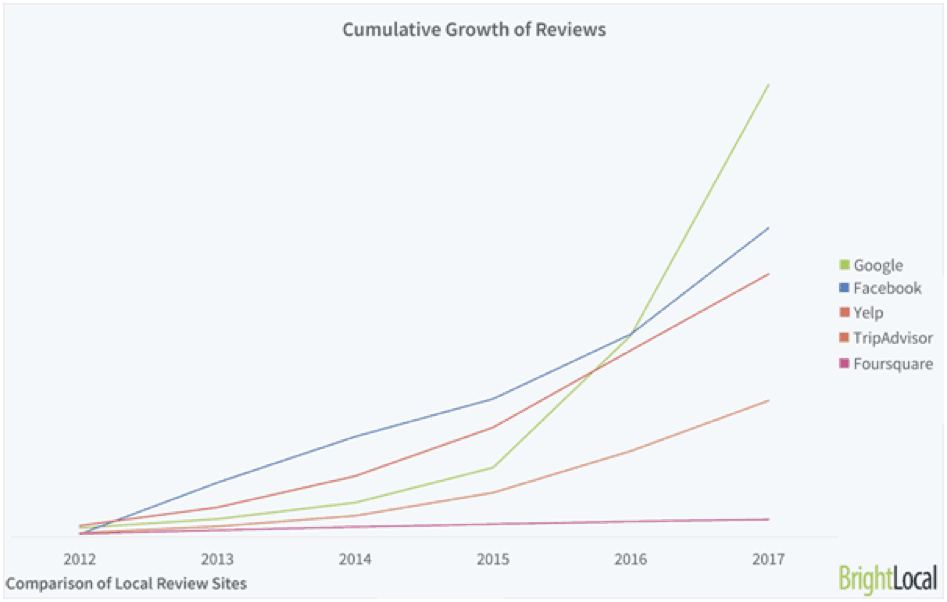Unless you’ve been living under a rock for the past few years you’ll know the importance of, and explosion in, online reviews.
Lead by Google, but with the help of heavyweights Facebook and Yelp, the volume and speed of online reviews continues to grow. Actually, skyrocket might be a better description.
In this post, I’ll share how to leverage your customer feedback/Net Promoter and service recovery processes to reduce negative reviews and build positive reviews for your business.

And their impact on buying behaviour is stark. While good reviews are important, the impact of a bad review can be even higher.
For instance, 94 % of people say an online review has convinced them to avoid a business.
But the news is not all bad. While 34% of people say they leave a review after a poor experience, 28% will leave a review after a positive experience.
Preventing bad reviews and generating good reviews is now a core part of doing business. It’s no longer a ‘nice to have’.

The Hidden Power of Transactional customer feedback
If you’re running a transactional customer feedback or Net Promoter Score process you have a secret weapon in the online reviews war: you know what your customers think about you in real time.
Getting your customer survey out quickly and acting on ANY negative feedback immediately is far more critical today than it has been in the past. If you can turn around an unhappy customer before they leave a review, that dreaded 0 star rating will never appear.
Transactional customer feedback is powerful because you can:
- Encourage happy customers to leave positive reviews
- Use a tightly managed service recovery process to convert unhappy reviewers into happy campers before they post their negative review.
Let’s dig into exactly how you can drive good reviews and avoid bad reviews using your customer feedback process.
1. Survey Soon after Interactions
If your survey doesn’t come out for days or weeks after the transaction, you’ve missed the boat. By then, unhappy customers have already written their negative review and you have no chance to retrieve the situation.
You need to automate your survey execution and send the survey within 24 hours of the interaction. Some organisations even send the survey immediately after the interaction, within minutes. Personally, I think you should leave it at least an hour otherwise it feels a bit ‘Big Brother,’ but sooner is better.
The vast majority of your invitees will click through to the survey within 24 hours of receiving it so you’re ready for the next step.
2. Encourage happy customers to leave reviews.
This is a pretty straightforward idea. By the end of your two or three question feedback survey, you will know if the person responding is happy (Promoter) or unhappy (Detractor) with their last interaction with your business.
So, on the last page of your survey you have the opportunity to present them with an opportunity to leave a review on the review site of your choice.
You can be a little cheeky here and, if your survey software is smart enough, you might only show the link to the review site for happy customers.
Note that encouraging people to leave a review is explicitly against the policy of some reviews sites including Yelp, so you should verify the policy of the site before proceeding in this area.
To maximize the number of reviews you should make it as easy as possible for the respondent.
Google Reviews
Google Reviews makes it easy to create a link that will send people directly to the “write reviews” page for your business.
Your link will look like this:
Of course, you should add some text above and make it look nice but that’s all there is to it.
Amazon Reviews
If your customer purchased via Amazon then you can suggest they provide an Amazon Review of the purchase.
It’s pretty straightforward but it might be a little more difficult to automate the link as it requires the customer to go to the product detail page.
To submit an Amazon review:
- Go to the product detail page
- Click Write a customer review in the Customer Reviews section.
- Click Submit.
3. Act-On on Low Survey Scores Immediately To Minimize Poor Reviews
Because the cycle time from poor experience to on-line review posting can be short (hours or days), you need to act on the feedback you receive in real time.
This process is called variously: “Firefighting”, “Service Recovery”, “Closing the Small Loop”.
Best in class companies have a goal of two hours from response receipt to outbound contact of the customer. If you can’t manage two hours then you should try for a maximum of 24 hours or one business day.
The goal of this call is to understand and, if possible, resolve the negative experience for the customers.
Most customers are surprised to receive the call and even if you can’t solve the issue the positive feelings you generate in the call can at least provide a place for the customer to vent in a safe, i.e. non-public, space. They should then be less likely to feel the need to strike out publicly and negatively for your brand.
If you think making these calls might be a negative or soul-destroying task you’d be wrong.
Check out this video featuring people who actually make the calls – from about 1:15 into the video. They enjoy their job because they are able to help people.
4. Become a Promoted Company
Few companies contact survey respondents when they have low scores so you set yourself apart from the competition by doing it.
Even (especially) customers who give you very low scores can and will be turned around in this process. Remember people that give you a bottom of the scale score are still engaged with you because they bothered to give you a score at all.
These engaged people are much easier to turn around than mid-scale people. By contacting them and resolving the problem you can take advantage of the service recovery paradox.
Think about the stories that people share.
They don’t share:
I interacted with my (bank/telco/coffee shop) and it was fine.
They do share:
I had a terrible time with my (bank/telco/coffee shop) but they called me back and fixed it within hours. Man, they really care about their customers.
Not only is the second comment one they are likely to make to friends and family, it is also the comment they will leave (along with their now high score) on review sites.
Note: while I don’t advocate that you annoy customer just so you can turn them around in service recovery. I do advocate that, when given the opportunity, you make use of the paradox.












